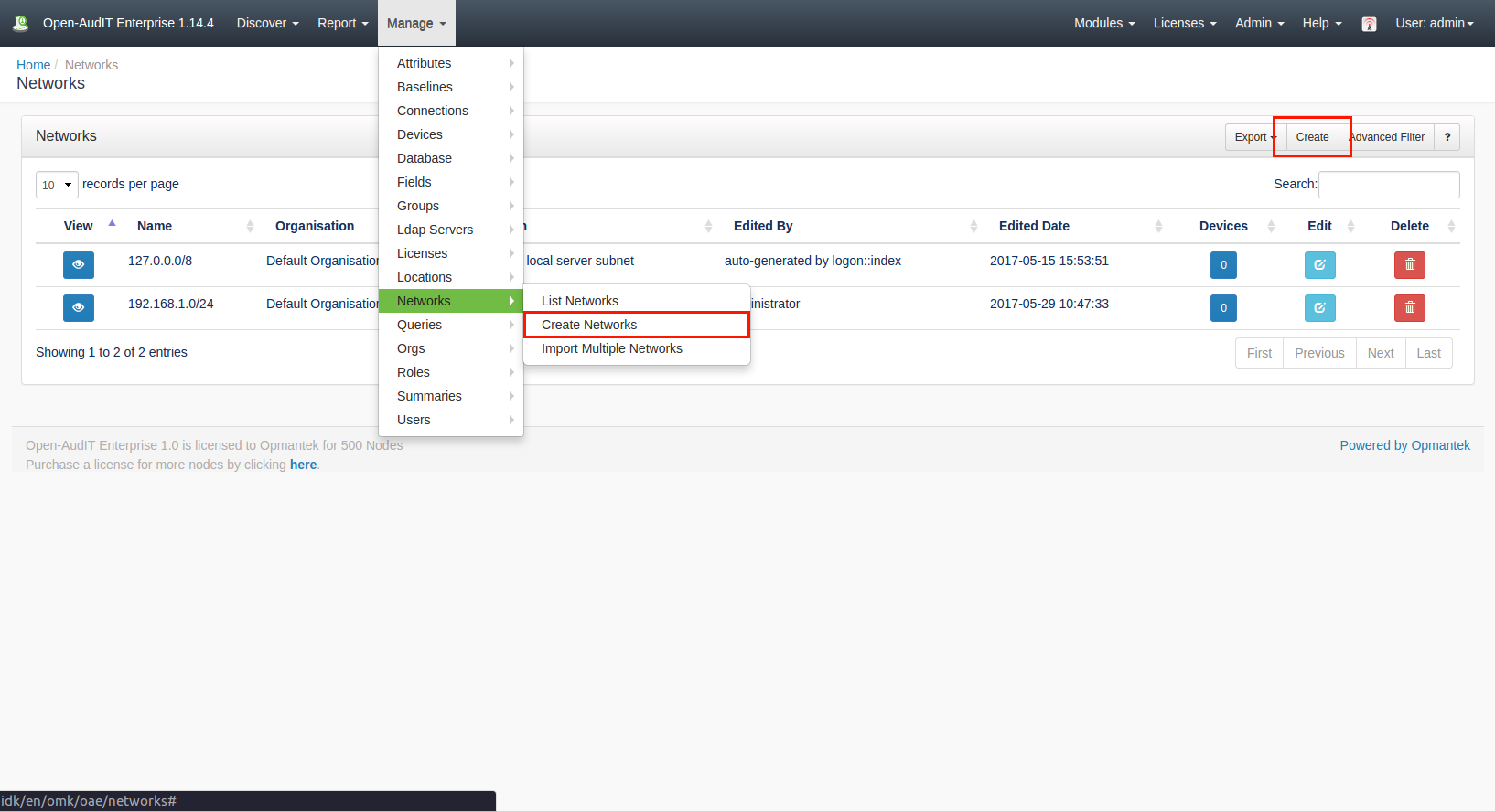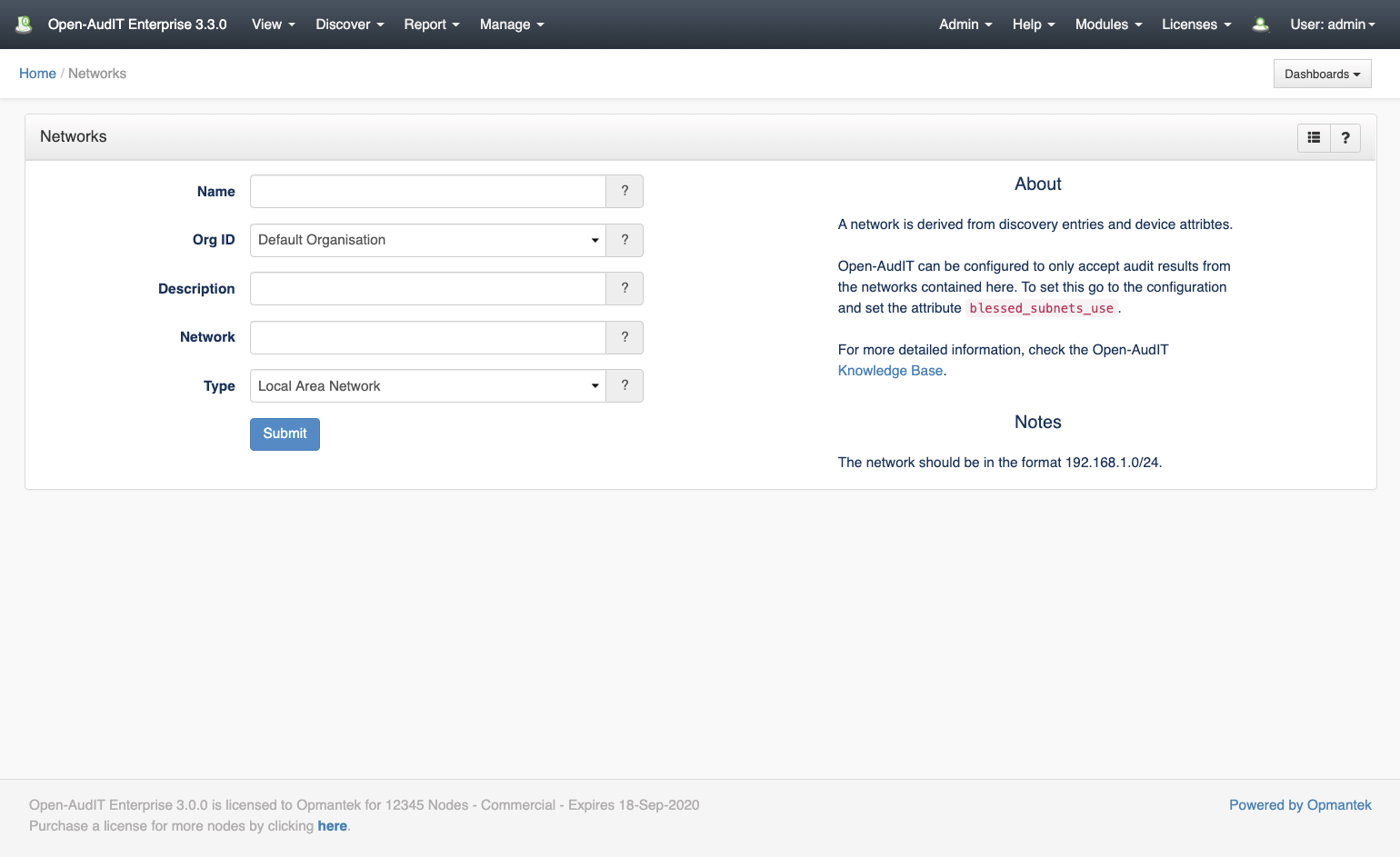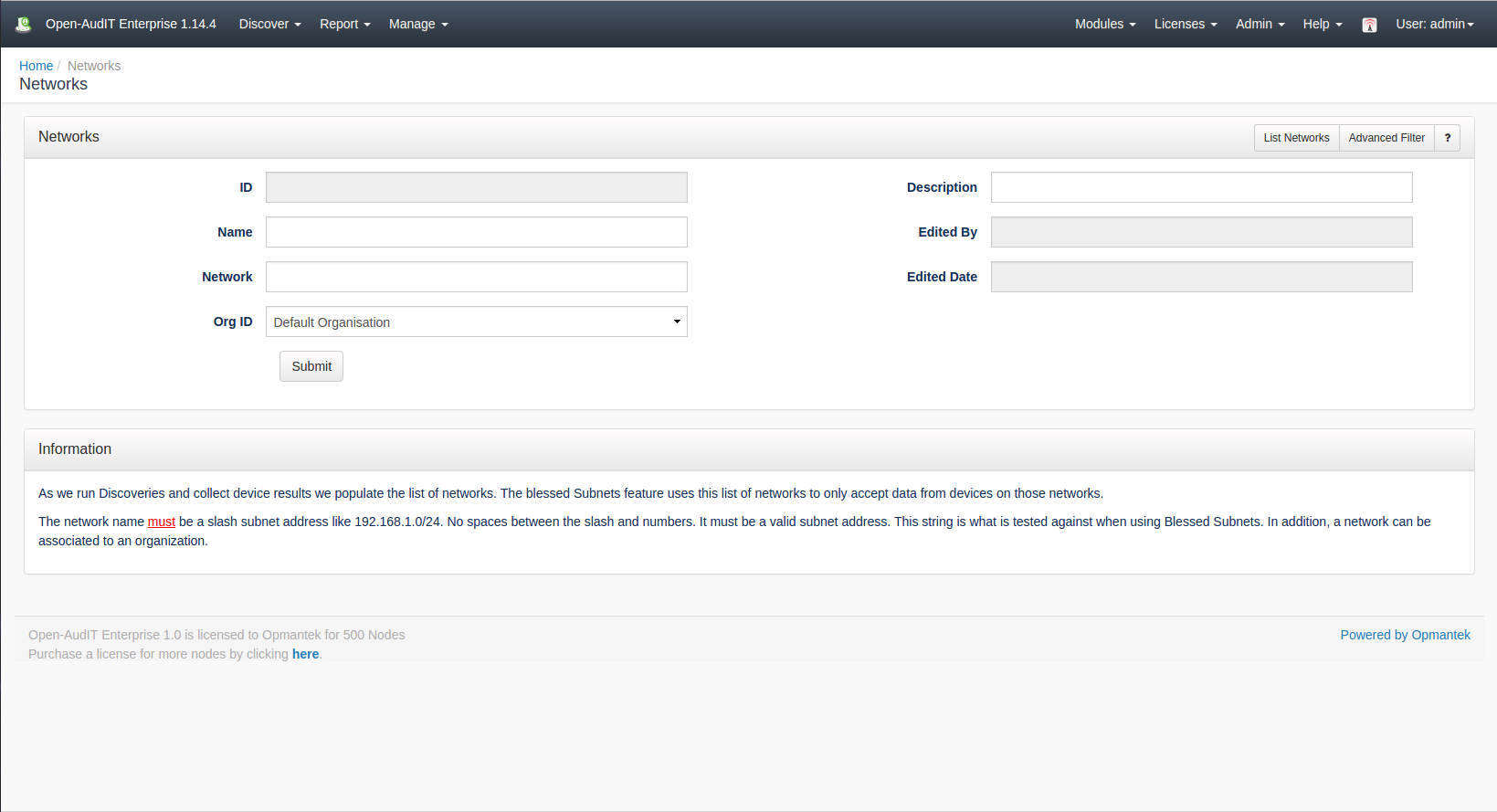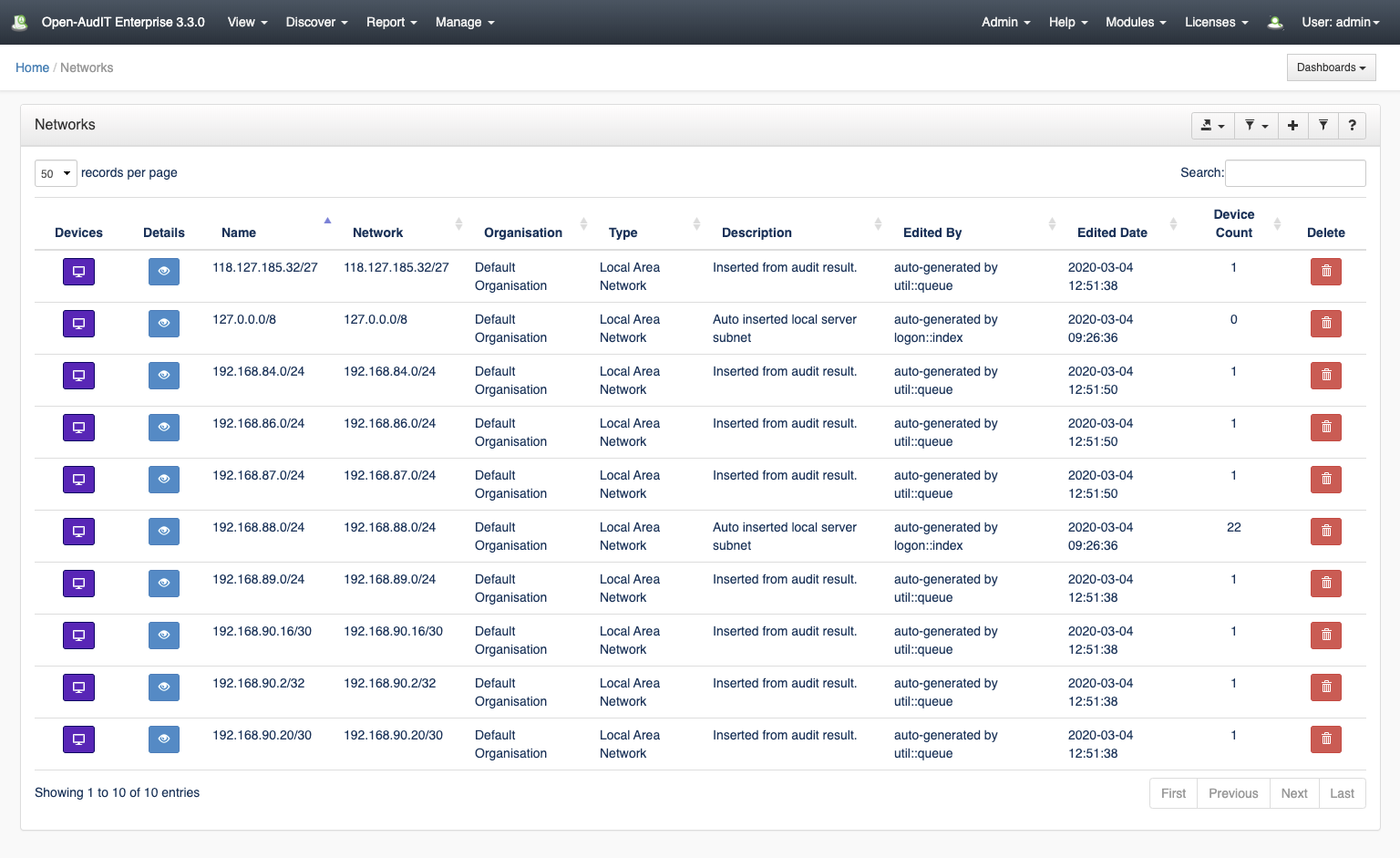...
To make another network go to menu: Manage -> Networks -> Create Network. Provide a name and an optional description.
View Network Details
Go to menu: Manage -> Networks -> List Networks.
Types of Networks
...
The schema for the database is below. It can also be found in the application if the user has database::read permission by going to menu: Manage Admin -> Database -> List Tables, then clicking on the "networks" table.
| Code Block | ||||||
|---|---|---|---|---|---|---|
| ||||||
CREATE TABLE `networks` (
`id` int(10) unsigned NOT NULL AUTO_INCREMENT,
`name` varchar(200) NOT NULL DEFAULT '',
`network` varchar(200) NOT NULL DEFAULT '',
`org_id` int(10) unsigned NOT NULL DEFAULT '1',
`type` enum('Personal Area Network', 'Home Area Network', 'Local Area Network', 'Wireless Local Area Network', 'Campus Area Network', 'Metropolitan Area Network', 'Wide Area Network', 'Storage-Area Network', 'System-Area Network', 'Passive Optical Local Area Network', 'Enterprise Private Network', 'Virtual Private Network') NOT NULL DEFAULT 'Local Area Network',
`description` text NOT NULL,
`edited_by` varchar(200) NOT NULL DEFAULT '',
`edited_date` datetime NOT NULL DEFAULT '2000-01-01 00:00:00',
PRIMARY KEY (`id`)
) ENGINE=InnoDB AUTO_INCREMENT=4 DEFAULT CHARSET=utf8; |
...
Networks are stored in the database in the "networks" table. A typical entry will look as below.
| Code Block | ||||||
|---|---|---|---|---|---|---|
| ||||||
id: 3
name: 192.168.1.0/24
network: 192.168.1.0/24
org_id: 1
type: Local Area Network
description: Auto inserted local server subnet
edited_by: Administrator
edited_date: 2017-05-29 10:47:33 |
...
You can access the /networks collection using the normal Open-AudIT JSON based API. Just like any other collection. Please see the API documentation for further details.
API Routes
Request Method | ID | Action | Resulting Function | URL Example | Notes | Example Response |
|---|---|---|---|---|---|---|
| GET | n |
| collection | /networks | Returns a list of networks. | networks_collection.json | |
| GET | y |
| read | /networks/{id} | Returns a network's details. | networks_read.json | |
| PATCH | y |
| update | /networks/{id} | Update an attribute of a networks entry. | networks_patch.json | ||
| POST | n |
| create | /networks | Insert a new networks entry. | networks_create.json | |
| DELETE | y |
| delete | /networks/{id} | Delete a networks entry. | networks_delete.json |
Web Application Routes
Request Method | ID | Action | Resulting Function | URL Example | Notes |
|---|---|---|---|---|---|
| GET | n | create | create_form | /networks/create | Displays a standard web form for submission to POST /networks. |
| GET | y | update | update_form | /networks/{id}/update | Show the networks details with the option to update attributes using PATCH to /networks/{id} |





